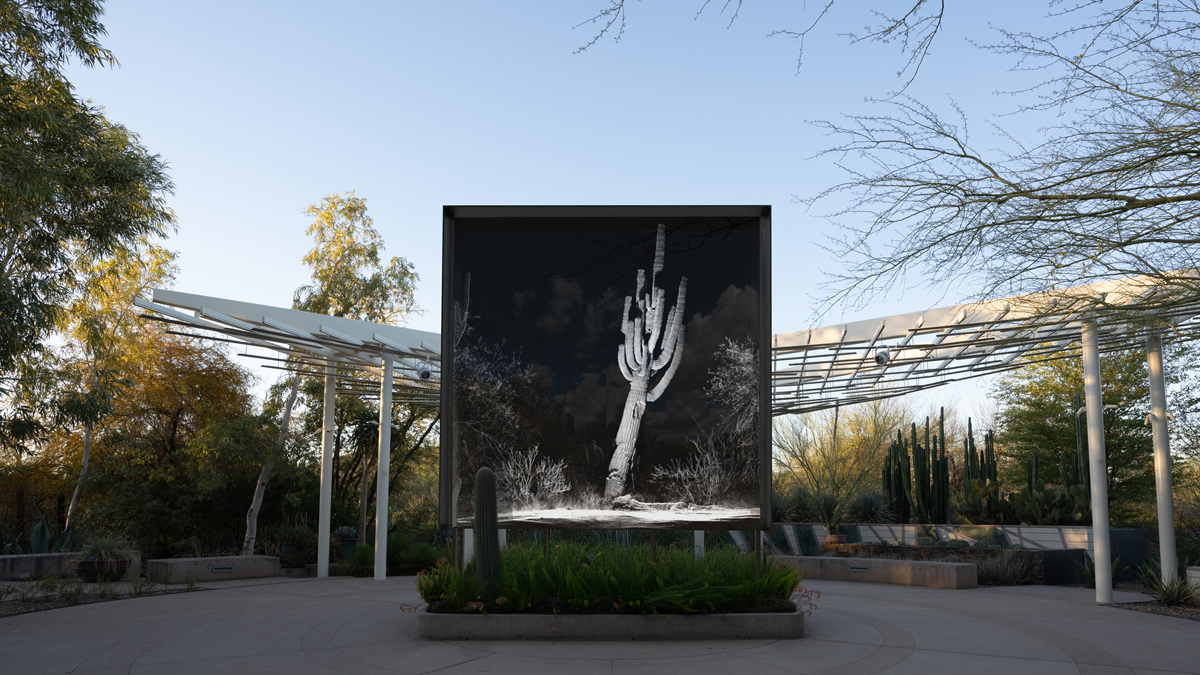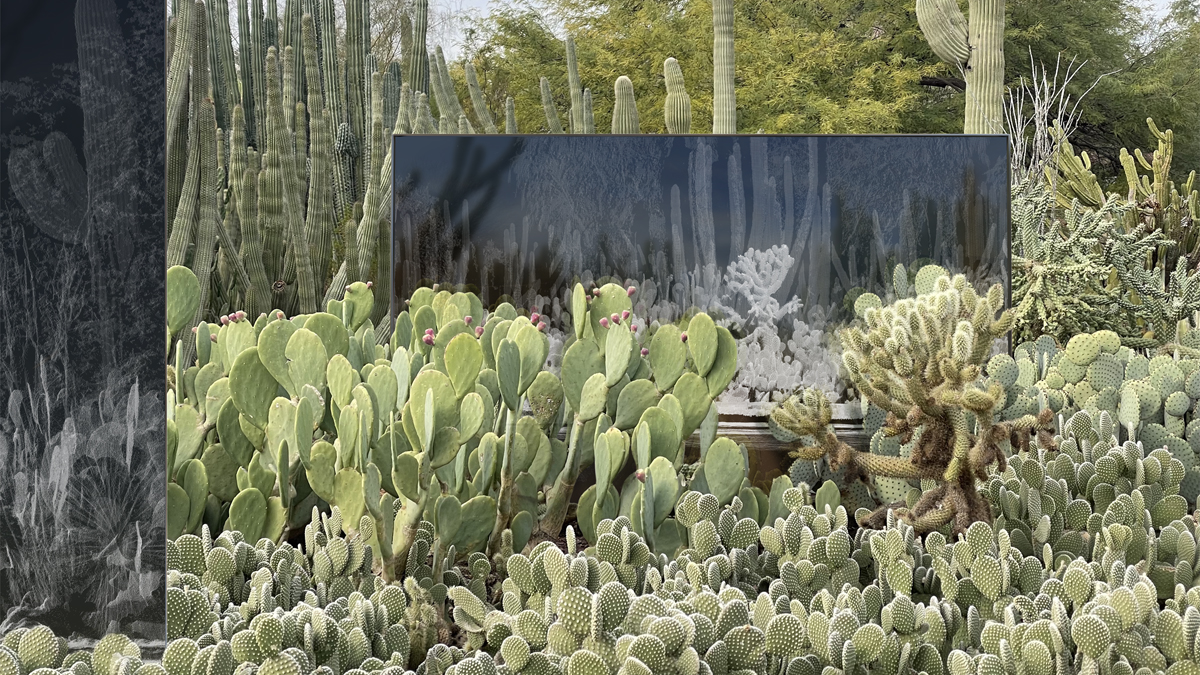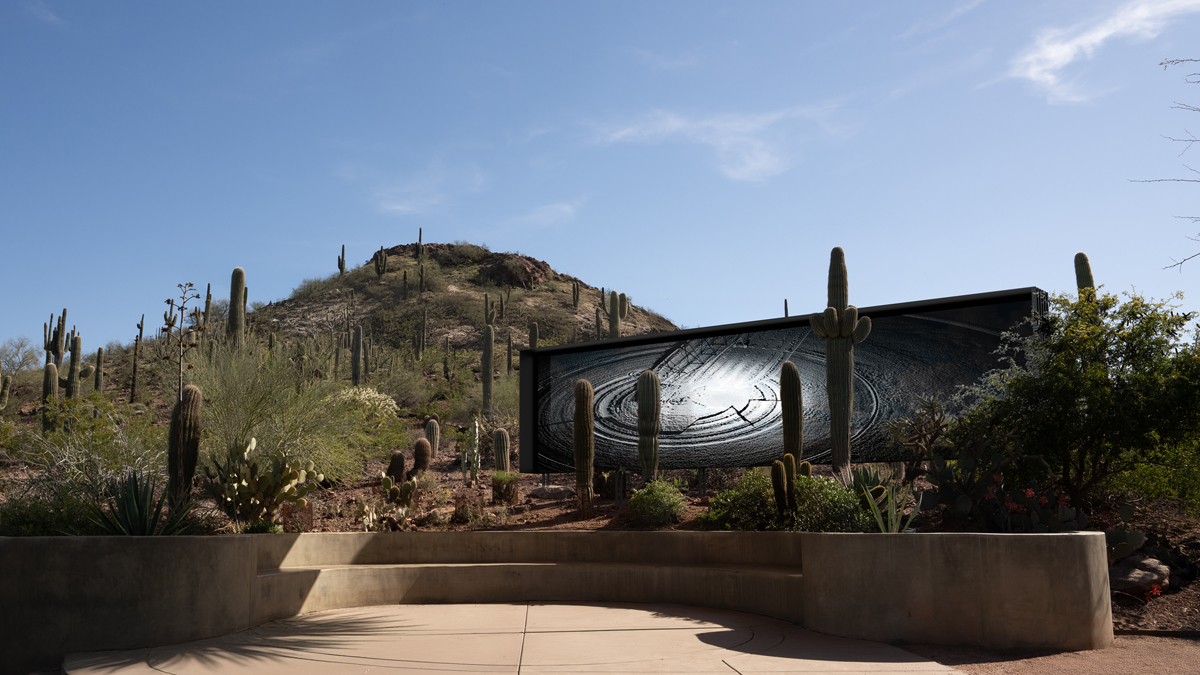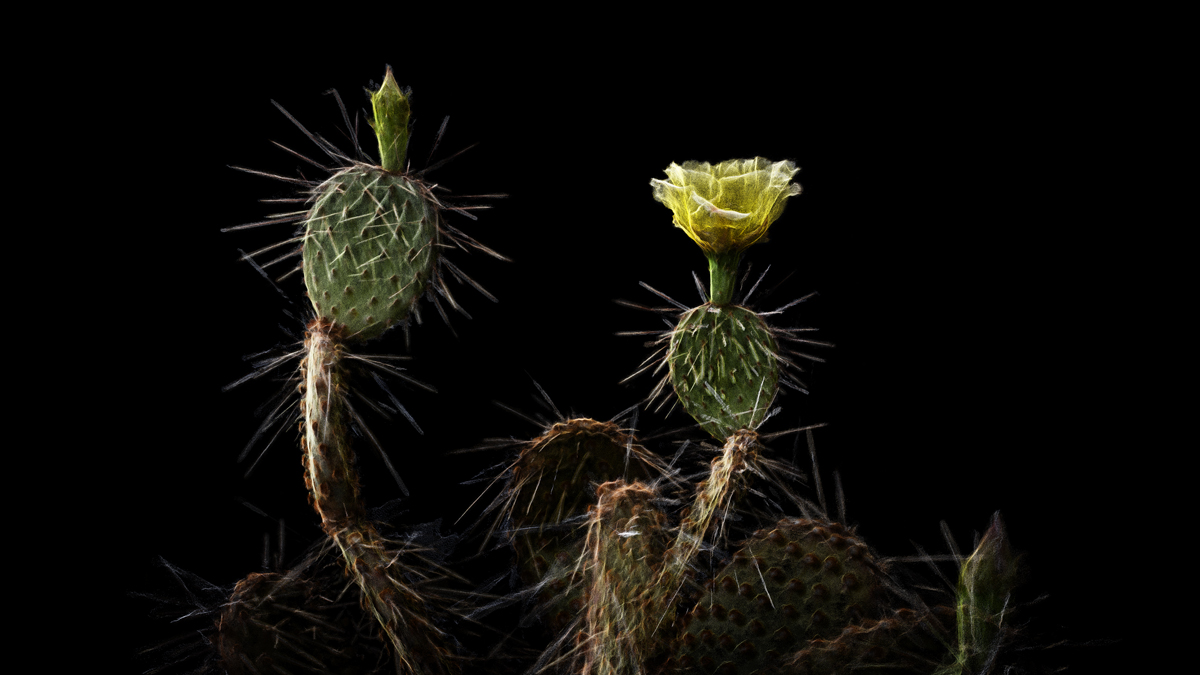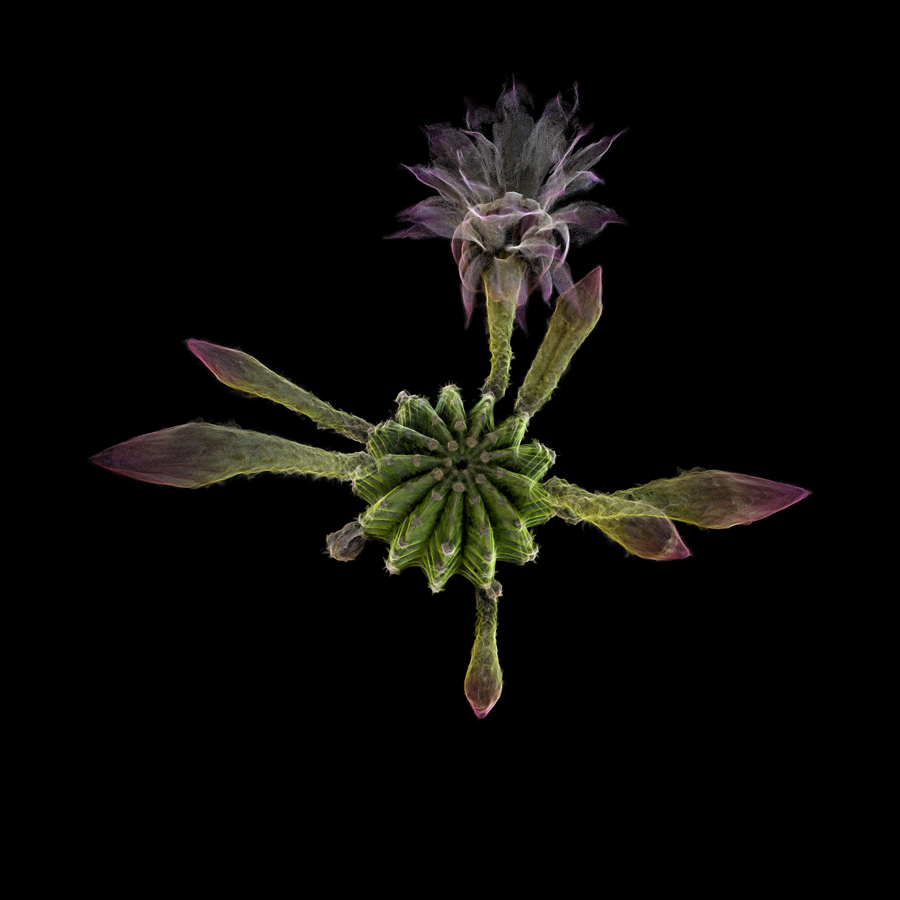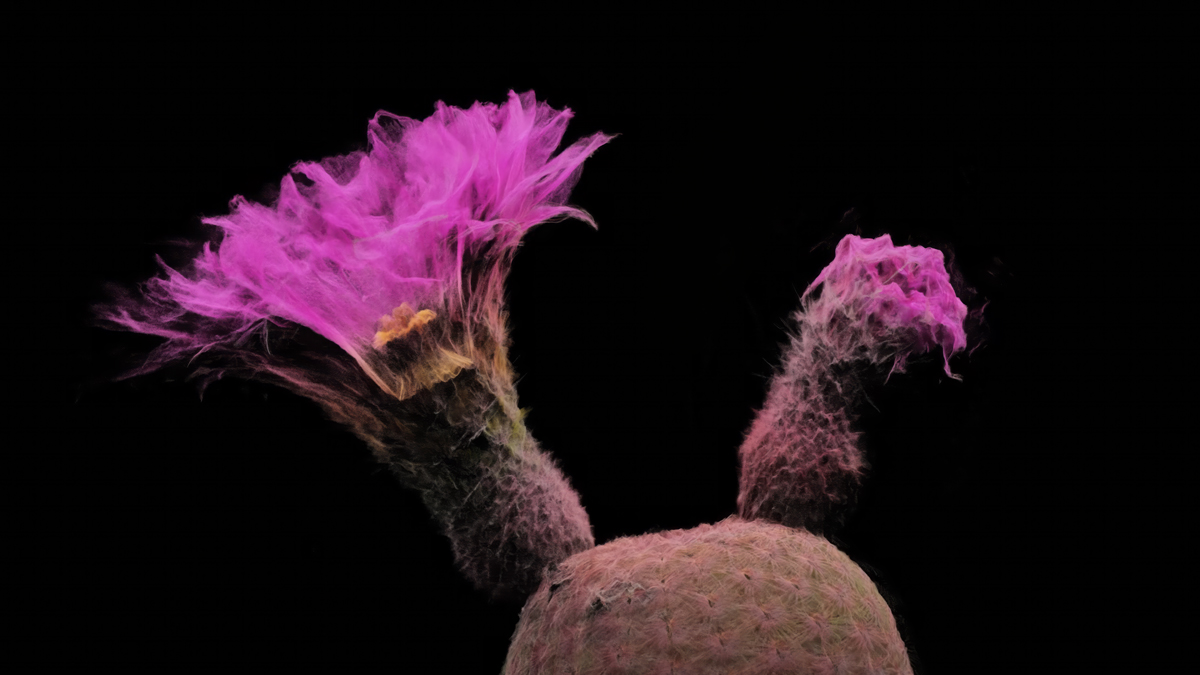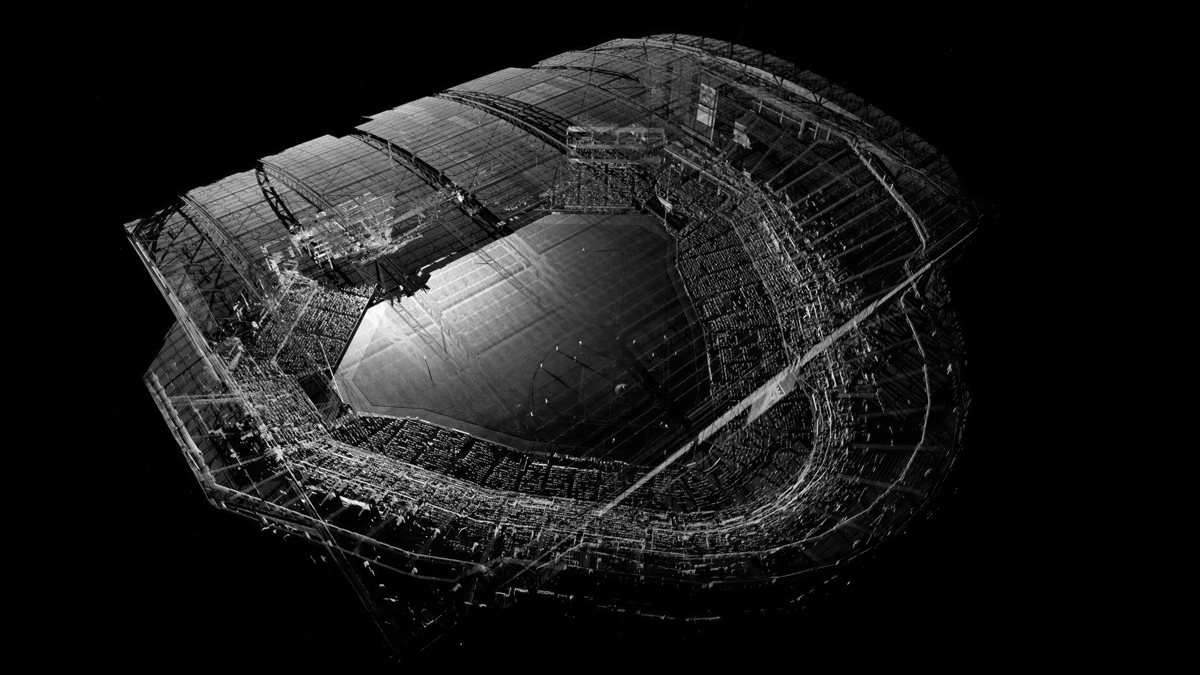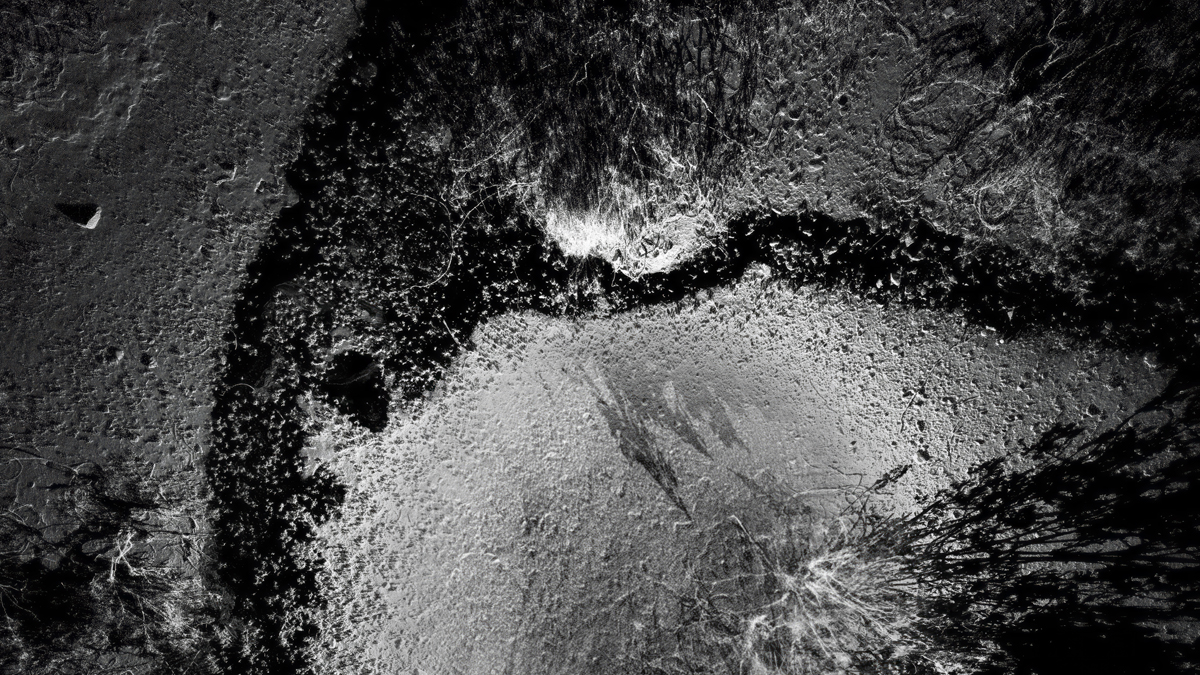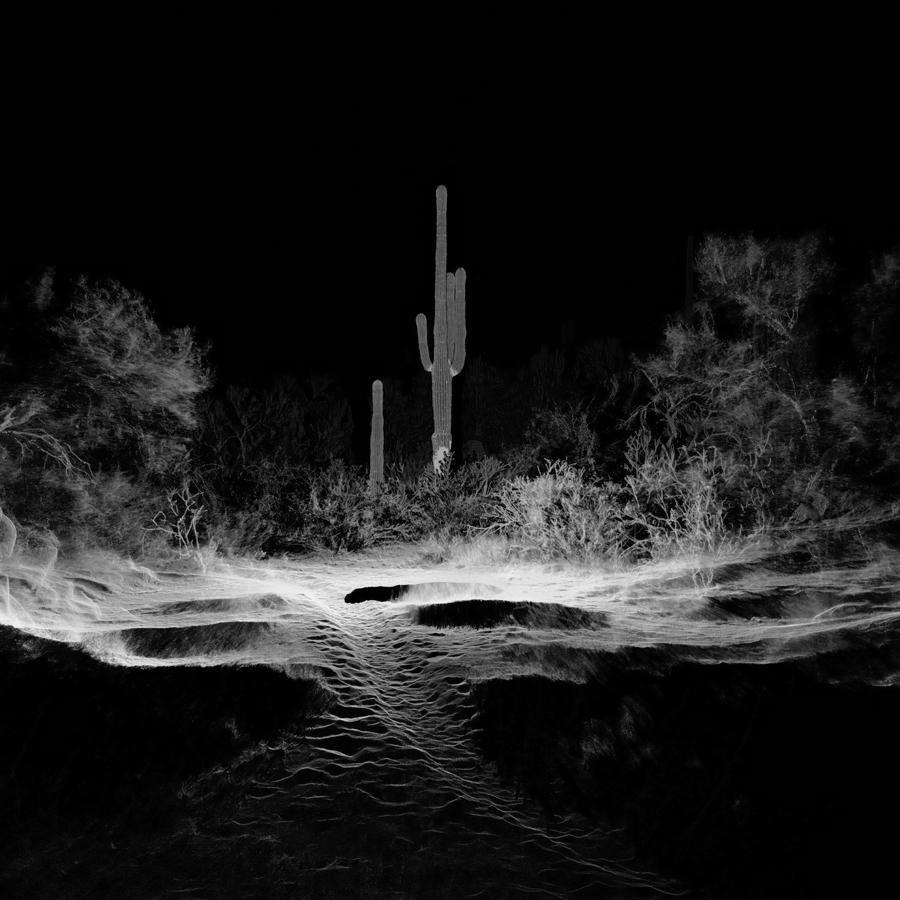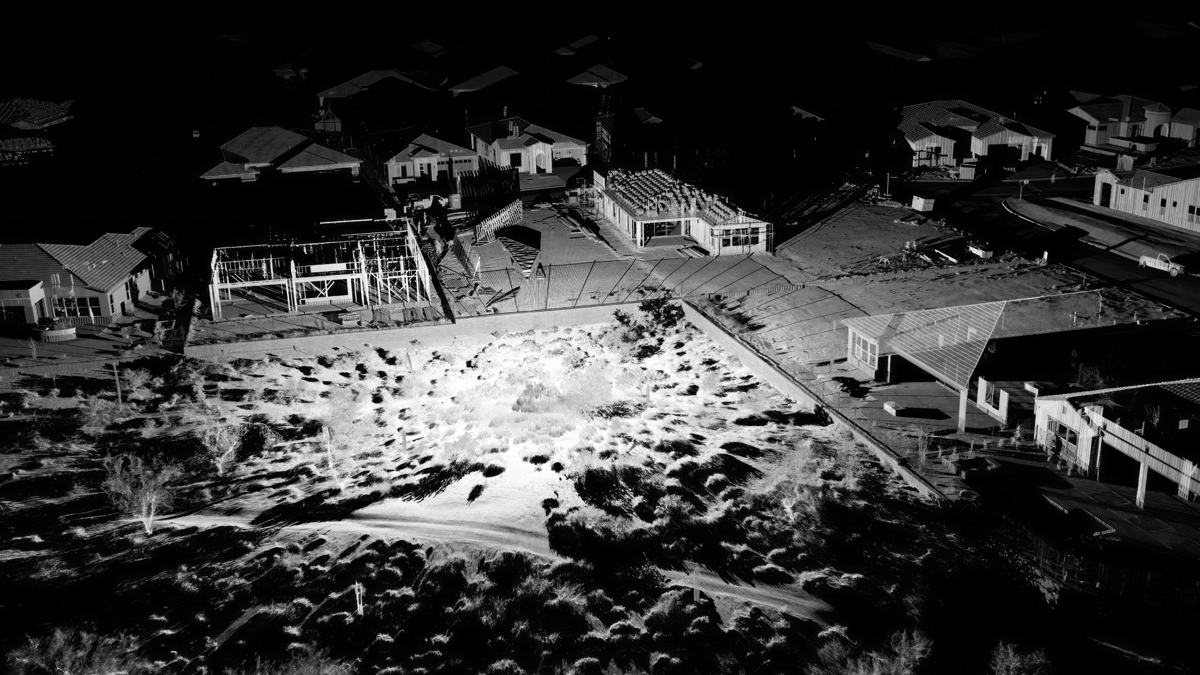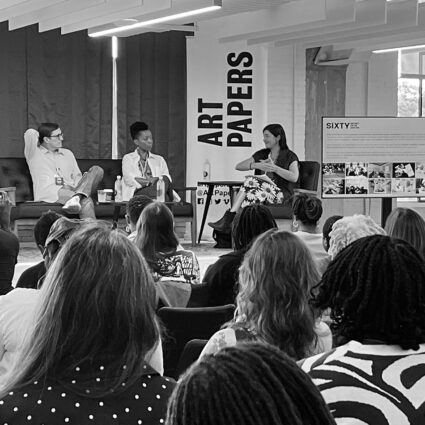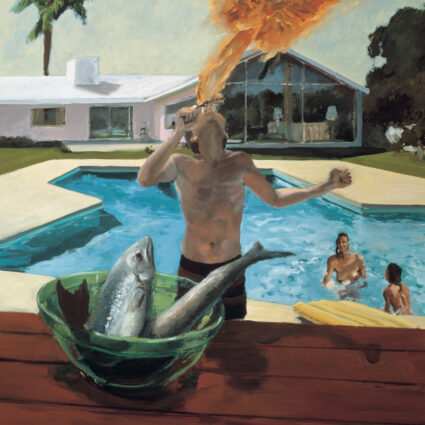Through LiDAR scans, UK-based studio ScanLAB Projects captured the Sonoran Desert in haunting detail, revealing a landscape on the brink.
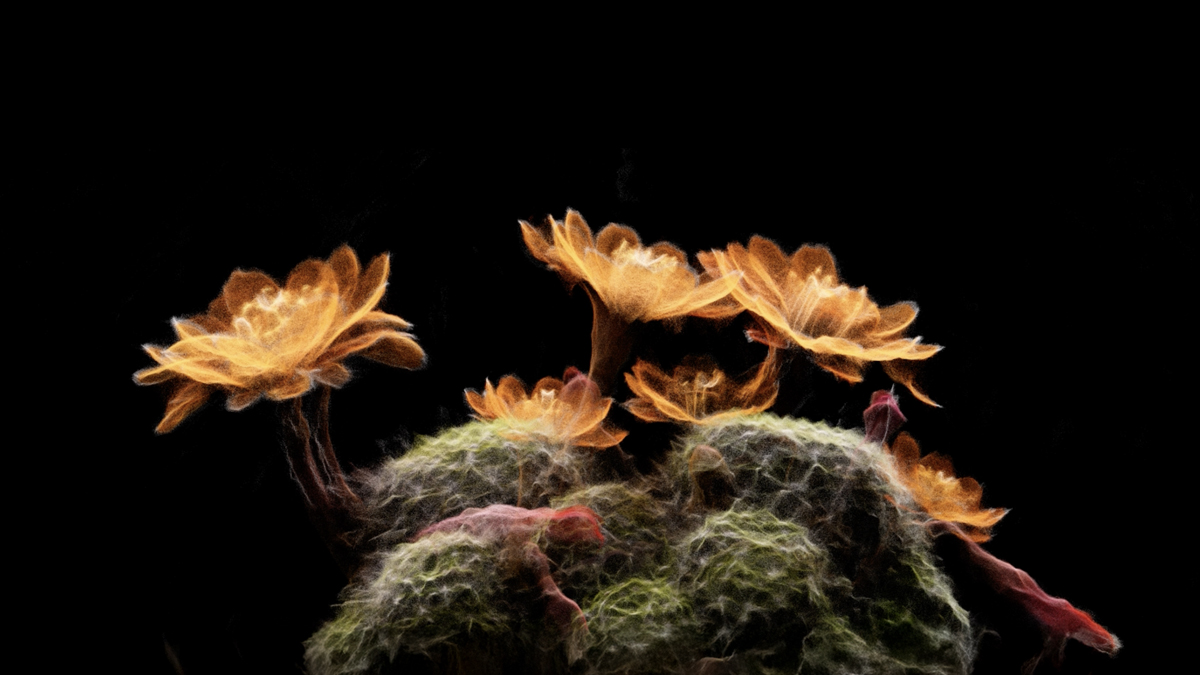
PHOENIX—While the Sonoran Desert may be known for its immense stillness, two artists have captured the movement and beauty of the arid environment in a new project focusing on desert plants and the effects of urbanization on the landscape. The exhibition FRAMERATE: Desert Pulse by ScanLAB Projects at the Desert Botanical Garden in Phoenix, Arizona, was produced over twelve months, with the artists using 3D scanning technology to document desert life in remarkable detail, uncovering a landscape far more alive and dynamic than commonly perceived.
The exhibition unfolds in a blackout gallery and across various outdoor sites in the garden, where four LED screens, some that are forty feet wide and thirteen feet tall, are strategically placed in dialogue with the surrounding plantings and mountainous terrain. These screens loop scans captured using LiDAR (Light Detection and Ranging) technology of the same plants throughout the year, showing cacti blooming, moving, and transforming—and challenging the misconception of the desert as a static or lifeless environment.
“Through scans, we saw cholla ‘dancing,’ opuntia pads flapping, plants swelling with moisture and then bursting into fast growth. Scientists knew this, but not with this level of detail,” says Matt Shaw, who cofounded ScanLAB with fellow London-based artist William Trossell. “I don’t believe that cacti blooms in particular have ever been observed with this fidelity in art or natural history. Residents know how they grow but don’t feel their pulse day-to-day. Some garden staff have worked with these plants for twenty-five years, yet are seeing them anew. It’s beautiful for experts to have fresh revelations.”
Through scans, we saw cholla ‘dancing,’ opuntia pads flapping, plants swelling with moisture and then bursting into fast growth.
In addition to flora, the project captures the human imprint on the desert. ScanLAB documented gravel pits, construction zones, and infrastructure like Phoenix’s Chase Field. One striking example is a massive gravel pit outside Phoenix, originally dug by hand nearly a century ago and later expanded into a multimillion-dollar operation. Now, after reaching its maximum depth, the site is being repurposed as a landfill. “It represents both the birth of Phoenix and the absurdity of endless regeneration,” Shaw says. “We keep building and rebuilding, often leaving destruction behind.”
As visitors move through the exhibition, they are enveloped in immersive soundscapes composed by Pascal Wyse. Using field recordings of birds, sand, rocks, and even cactus spikes being plucked, Wyse crafted sonic environments that guide the emotional tone of the visuals. “The sound shapes how people perceive what they’re seeing—sometimes smoothing out the intensity, other times amplifying it,” Shaw says.
Creating the scans was a physically and technically demanding process. The desert’s extreme heat posed one of the biggest challenges, with some local collaborators enduring 110-degree days for hours at a time. “Producing a single scan is a massive undertaking,” Shaw notes. “Returning to the same location under those conditions can be brutal.” One team member wore an ice vest that melted in minutes. Even high-tech equipment that was protected inside cooling boxes would sometimes overheat in just ten minutes.
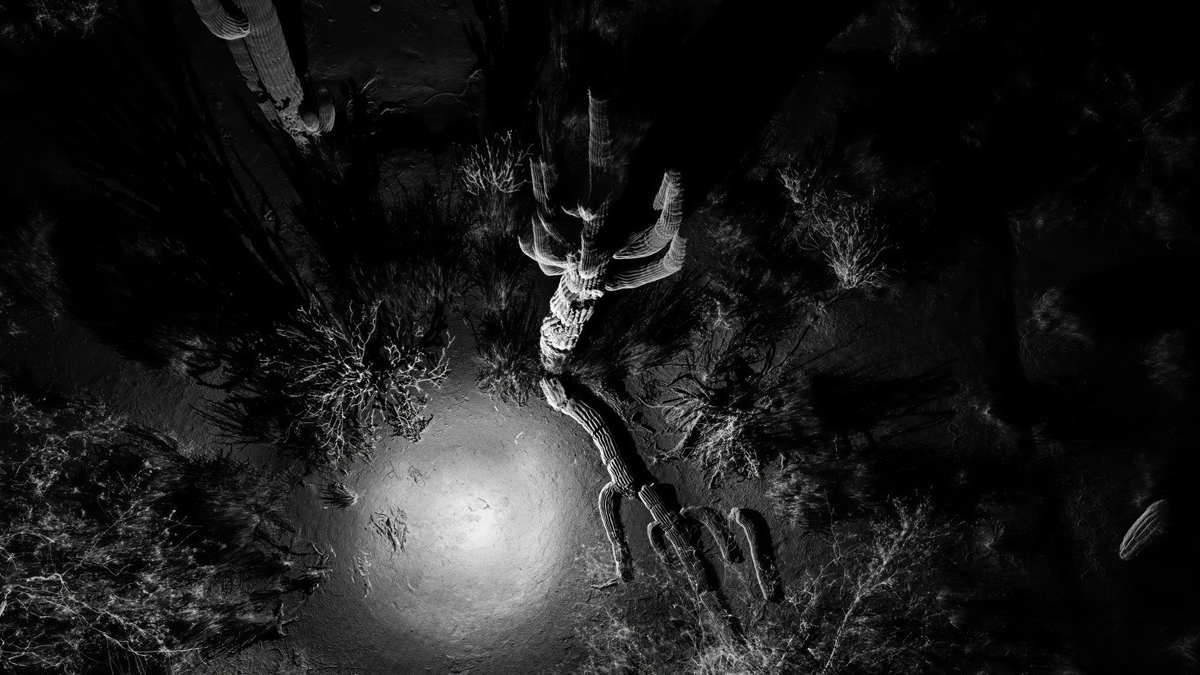
Despite these challenges, the team prioritized sustainability throughout the project. They reduced travel, worked in small teams, tracked carbon emissions, and used electric vehicles like Rivian trucks to access remote sites. Given the high energy demands of LED screens, they made careful choices to balance artistic impact with environmental responsibility.
“Sometimes sustainable choices cost more, but we’re transparent about that,” Shaw explains. “We’re a small studio of ten people, not profit-driven. Still, we commit serious resources to sustainability, hoping others see that as an example.”
Shaw describes FRAMERATE: Desert Pulse as the studio’s most ambitious work to date. It is both a celebration of desert life and a subtle warning about the forces shaping it. The artists hope viewers will come away with a renewed sense of wonder, attuned to the meditative pace of cacti blooms, river rhythms, and geological time. Phoenix, a city at the forefront of climate change—with record-breaking temperatures and rising heat-related deaths—provided a poignant context for the work.
We show both the elegance of nature and the strange marks humans leave behind. Some of those marks bring joy; others, destruction.
“One of our ambitions with FRAMERATE is not just to critique, but also to celebrate the beauty of change,” Shaw says. “We show both the elegance of nature and the strange marks humans leave behind. Some of those marks bring joy; others, destruction. We hope audiences come away reflecting on the different timescales that shape our world—and their own roles in it.”
He adds: “Environmental and social justice are always central to our work. This project is different, but the core is the same: making landscapes—many of which people will never visit—deeply felt and seen. Across all our projects, we push technology so audiences can experience landscapes in ways they never have before.”
Founded in 2010, ScanLAB is an artist-led studio in London that pushes the boundaries of laser scanning and photographic technologies. Past works include FRAMERATE: Pulse of the Earth (2022) exhibited at the 79th Venice International Film Festival; Frozen Relic: Arctic Works (2012) which documented a melting Arctic ice core; and Living Death Camps (2012), which used scanning and ground-penetrating radar to study concentration camp sites.
“For years, the only way our technology could ‘witness’ the world was by capturing single moments,” Shaw says. “But the world is living and beating and we wanted to bring time into the work. That shift quickly became a profound way of seeing. We could finally visualize what we’ve always intuitively known about landscapes.”
